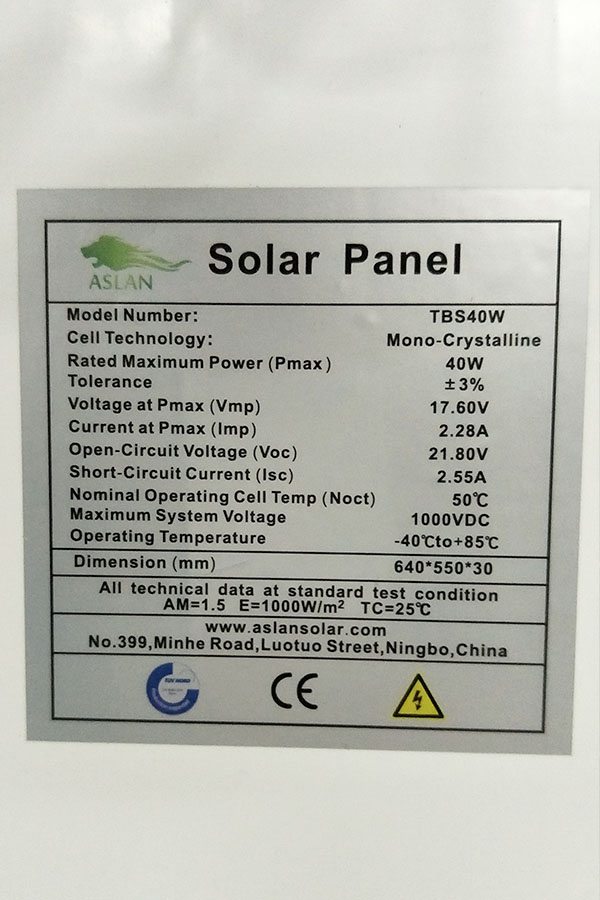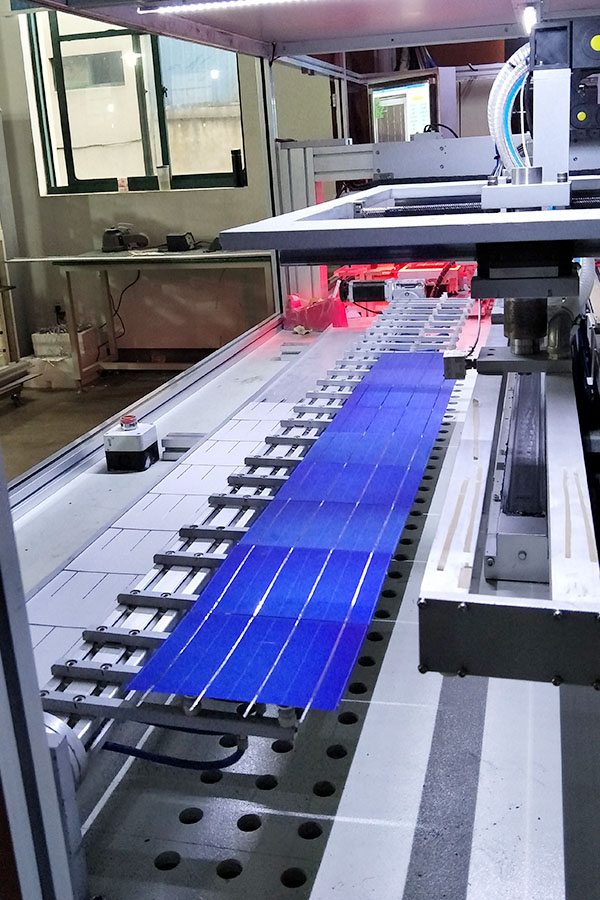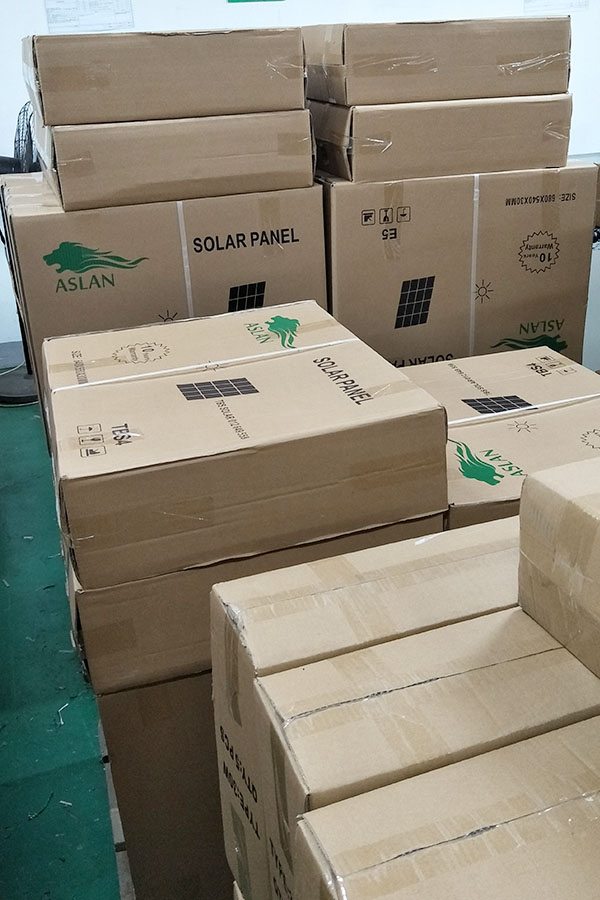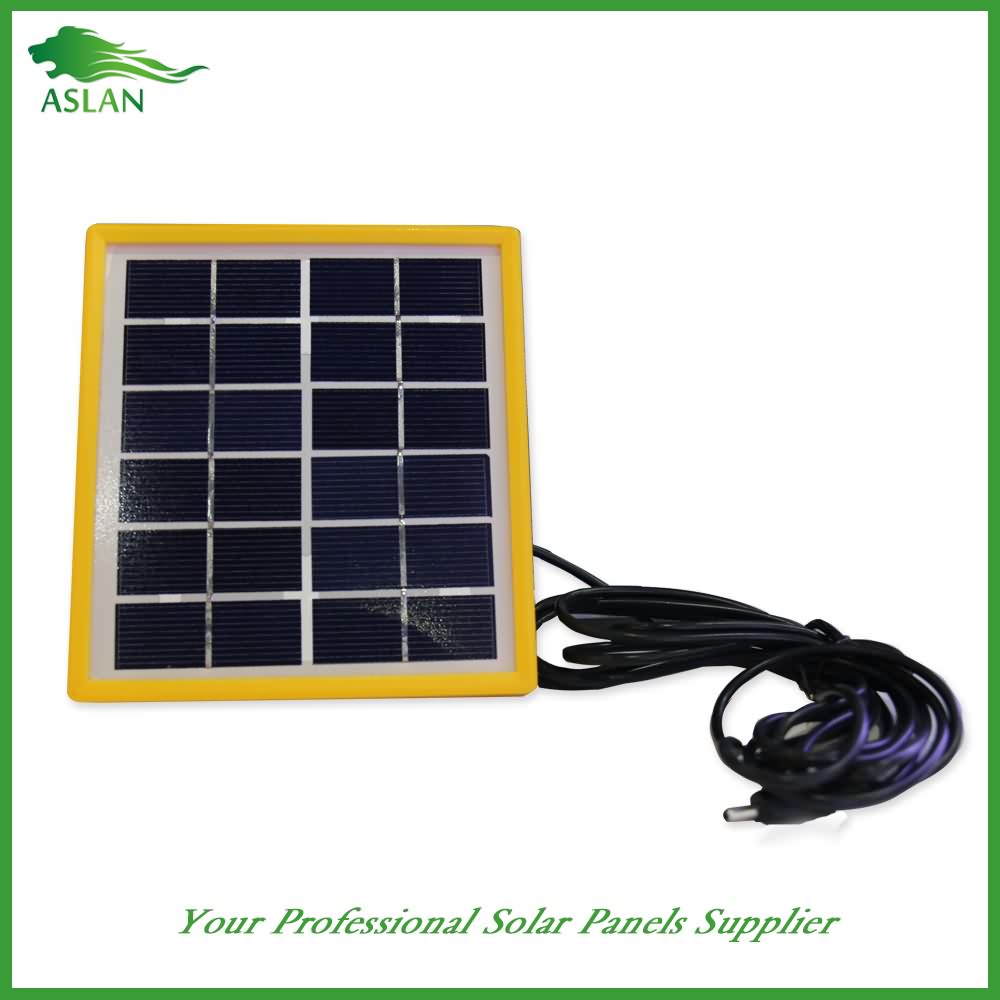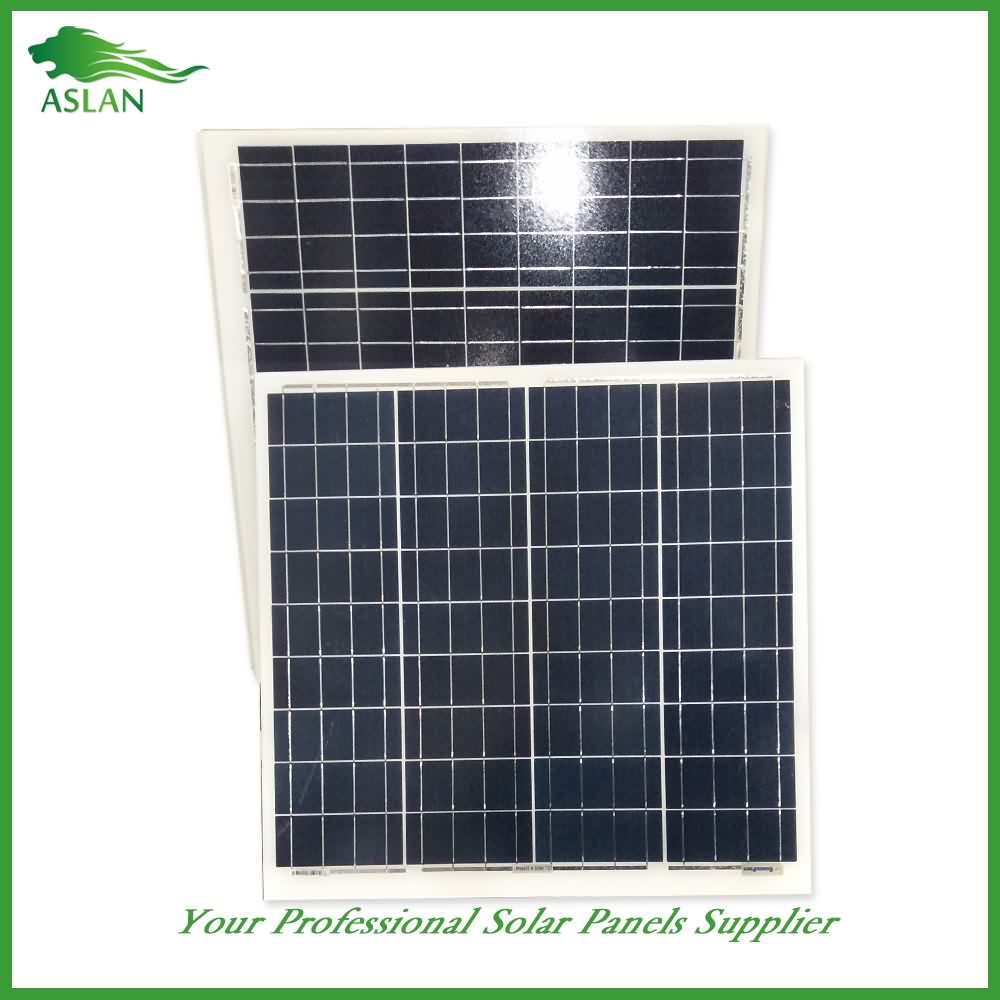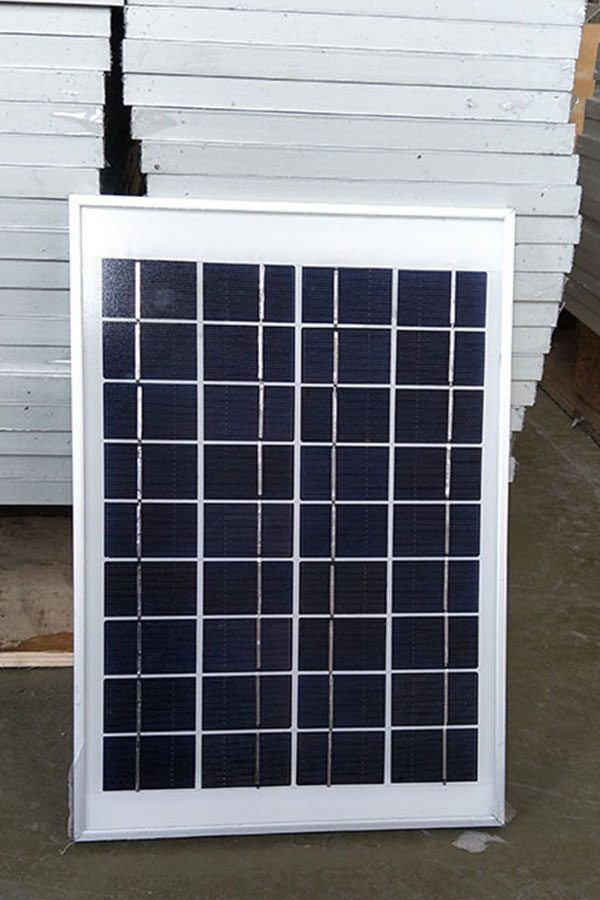Quality Inspection for Mono-Crystalline 50W Solar Panel Bangladesh Manufacturers
Short Description:
Our well-equipped facilities and excellent quality control throughout all stages of production enables us to guarantee total customer satisfaction for Quality Inspection for Mono-Crystalline 50W Solar Panel Bangladesh Manufacturers, Our company warmly welcome friends from all over the world to visit, investigate and negotiate business.
Technical parameter
Maximum Power(W) 50W
Optimum Power Voltage(Vmp) 18.72V
Optimum Operating Current(Imp) 2.67A
Open Circuit Voltage(Voc) 22.83V
Short Circuit Current(Isc) 2.94A
Mechanical Characteristics
Cell Type Monocrystalline 125×62.5mm
No of Cell 36 (4x9pcs)
Dimensions 636x554x25mm
Weight 4.2Kg
Front Glass 3.5mm,High Transmission, Low Iron,Tempered Glass
Junction box IP65 Rated
Output Cable TUV 1×4.0mm2/UL12AWG,Length:900mm
Temperature and Coefficients
Operating Temperature(°C): -40°C ~ + 85°C
Maximum System Voltage: 600V(UL)/1000V(IEC) DC
Maximum Rated Current Series: 15A
Temperature Coefficients of Pmax: -0.47%
Temperature Coefficients of Voc: -0.389%
Temperature Coefficients of Isc: 0.057%
Nominal Operationg Cell Temperature (NOCT): 47+/-2°C
Materials of solar panel
1).Solar Cell——Mono-crystalline solar cell 125*125mm
2).Front Glass——-3.2mm, high transmission, low iron, tempered glass
3).EVA——-excellent anti-aging EVA
4).TPT——-TPT hot seal made of flame resistance
5).Frame——anodized aluminum profile
6).Junction Box——-IP65 rated, high quality, with diode protection
Superiority: high quality anodized aluminum frame, high efficiency long life, easy installation, strong wind resistance, strong hail resistance.
Features
1. High cell efficiency with quality silicon materials for long term output stability
2. Strictly quality control ensure the stability and reliability, totally 23 QC procedures
3. High transmittance low iron tempered glass with enhanced stiffness and impact resistance
4. Both Poly-crystalline and Mono-crystalline
5. Excellent performance in harsh weather
6. Outstanding electrical performance under high temperature and low irradiance
Quality assurance testing
Thermal cycling test
Thermal shock test
Thermal/Freezing and high humidity cycling test
Electrical isolation test
Hail impact test
Mechanical, wind and twist loading test
Salt mist test
Light and water-exposure test
Moist carbon dioxide/sulphur dioxide
This video can be downloaded here: http://www.ashdenawards.org/winners/grameen Grameen Shakti won an Ashden Award for Sustainable Energy in 2006.
You can follow us on:
Facebook http://bit.ly/9GKbIM
Twitter http://twitter.com/AshdenAwards
Blog: http://www.ashdenawards.org/blog/latest
Grameen Shakti has sold and installed over 65,000 solar home-systems (SHS) in rural Bangladesh, and brought major benefits to its users. Nearly 70% of households in Bangladesh are not connected to the electricity grid and depend on kerosene for lighting. This includes most rural areas and extends as far as the fringes of Dhaka. There are plans to extend the grid, but there is little prospect of substantial change in the foreseeable future.
By selling SHS, Grameen Shakti has provided lighting, communications (especially mobile phone charging) and TV, and has increased employment opportunities. It is the largest single installer of SHS in Bangladesh.
This impressive number of installations has been achieved by enabling users to purchase their systems on micro-credit with affordable terms, tailored to their specific needs. Funding for the micro-credit system comes from the World Bank and GEF via the Infrastructure Development Company Limited (IDCOL) which provides Grameen Shakti with both subsidy and concessional loans. The cash pool from credit repayments will enable Grameen Shakti to continue the scheme when the subsidy, which is being phased out, ceases in 2008.
Grameen Shakti has also started a network of technology centres throughout the country to manage the installation and maintenance of SHS locally. It emphasises the importance of technicians who know local customs working through local branches, and has trained 2,000 (mainly female) technicians. It aims to install 100,000 systems by 2006 and sees the potential to install one million systems by 2015.


